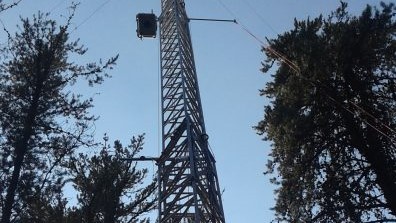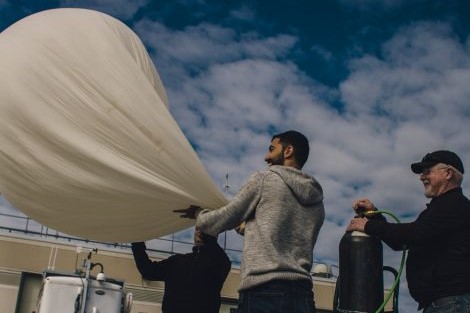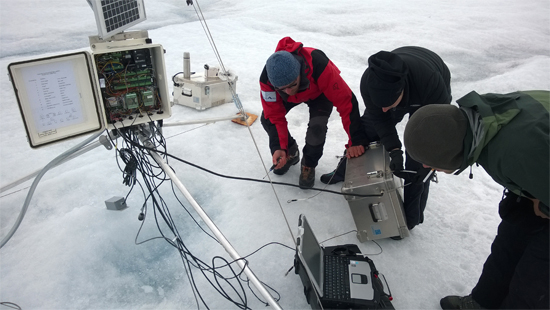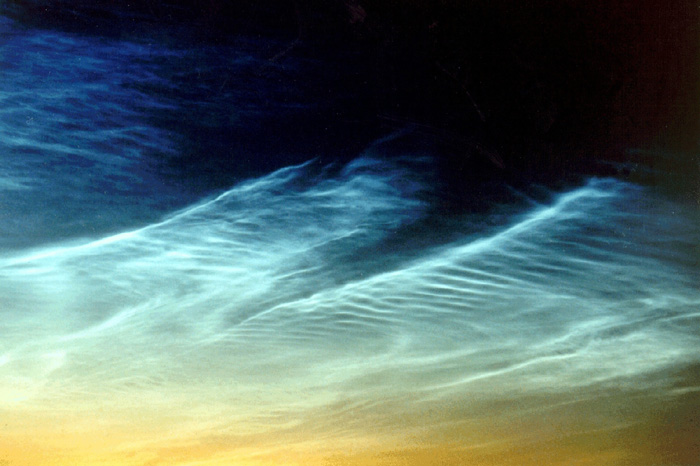Earth and Atmospheric Science
Research and teaching activities span a broad range of atmospheric science topics from aerosol chemistry, cloud microphysics and small-scale turbulence, micro, meso and synoptic scale meteorology to global scale phenomena affecting weather, climate, air quality and the ozone layer. Studies of the atmosphere of Mars and other planets are also undertaken.
There are excellent opportunities for collaborative research with the Meteorological Service of Canada and with other research groups both in Canada and abroad. Department members have been active in the Canadian Meteorological and Oceanographic Society and the Canadian Foundation for Climate and Atmospheric Sciences. The Lassonde School of Engineering at York University is a member of the University Corporation for Atmospheric Research, which operates the U.S. National Center for Atmospheric Research in Boulder, Colorado.





Yongsheng Chen
Dr. Chen’s research interests are in studying the dynamics of severe weather phenomena, in particular hurricanes and convective storms, and in improving their predictions. Specific topics such as cyclogenesis, rapid intensity change, mesoscale structures of hurricanes, the initiation and evolution of severe storms, and their interactions with the synoptic-scale and smaller-scale flows are investigated through observations and numerical modeling. Advanced multi-scale data assimilation techniques are designed and utilized not only as powerful research tools, but also as methods to improve severe weather predictions by assimilating critical in-situ and remote-sensing observations into the models.

Mark Gordon
Dr. Gordon’s research interests are the emission, deposition, and transport of chemicals, pollutants, aerosols, and particles to and from various sources, including petroleum production facilities, road traffic, forests, and arctic environments. Specific current topics include analysis of airborne measurements over the Alberta Oil Sands, the study of aerosol and VOC emissions in a mixed forest at the Borden Forest Research Station, and the mixing and transport of traffic-pollutants on and near highways in the Toronto area. These projects combine field measurements with microscale transport modelling and analysis.

Gary P. Klaassen
Dr. Klaassen’s major research interests are in wave dynamics, stratified shear flows, the transition to turbulence, cloud dynamics and mesoscale meteorology. A variety of theoretical and numerical models are being employed to study the evolution and stability of nonlinear disturbances in the atmosphere. The goal is to improve our understanding the evolution of complex small-scale flows, and their interactions with the larger scales associated and weather and climate systems. These issues will become increasingly important over the next few years as hydrostatic global and regional models are pushed to finer resolution, and will be especially important in the development of nonhydrostatic global circulation and weather prediction models. Small-scale processes also represent fascinating examples fundamental problems in fluid dynamics. Recently, Dr. Klaassen’s group has focused on gravity wave processes in the atmosphere, including gravity wave generation, propagation and breaking. We are also developing parameterization schemes for the representation of drag due to small-scale unresolved gravity waves, a process which is of crucial importance in determining the circulation of the middle atmosphere and its effect on ozone. This work is also relevant to other stably stratified geophysical flows, e.g., the ocean. Other areas of interest include moist convection, and the transition to turbulence in shear flows.

Noctilucent Polar Mesospheric Clouds reveal breaking gravity waves near an altitude of 83 km. The momentum deposition from such breaking waves plays a crucial role in shaping the circulation of the middle atmosphere.Photo by Pekka Paravainien, Turku, Finland 21/22 July 1989, 02:15 GMT.

Noctilucent Polar Mesospheric Clouds reveal breaking gravity waves near an altitude of 83 km. The momentum deposition from such breaking waves plays a crucial role in shaping the circulation of the middle atmosphere.Photo by Pekka Paravainien, Turku, Finland 21/22 July 1989, 02:15 GMT.

Peter A. Taylor
Dr. Peter Taylor’s research pertains to the lowest layers of the atmosphere, from the surface to heights of about 1000m. This layer is studied using numerical models and field observations. Specific interests are in the study of flow over hills and in complex terrain, stable boundary layers, blowing snow and aspects of air-sea interaction including wind wave generation. Wind tunnel studies and the use of networks of automated surface weather stations have also been undertaken.

Jim Whiteway
Professor Whiteway investigates the atmospheres on Earth and Mars. The work involves the development and application of laser remote sensing technology.
Mars:
Professor Whiteway led a team of Canadian scientists in discovering snow falling from Martian clouds. The observations were made with an instrument called the LIDAR on the spacecraft for the NASA Phoenix mission that landed on Mars in 2008. The LIDAR instrument was based on the development of laser remote sensing within Prof. Whiteway’s laboratory at York University. It emitted pulses of laser light into the Martian sky, measuring dust and clouds composed of water ice. The clouds were observed to have streaks extending toward the ground. That view was immediately familiar to Prof. Whiteway since LIDAR measurements of precipitation look the same on Earth.
The Phoenix Mars mission is finished, but the work continues in an environmental chamber that simulates the conditions on the surface of Mars. The next generation of the Mars LIDAR will be directed at the surface of Mars to detect the deposition of water and this is being tested in a chamber that simulates the environment on Mars. Scientific progress is already being made with the finding that water can condense out of the atmosphere onto salts on the surface of Mars.
Earth:
Professor Whiteway’s Earth based research involves the development and application of laser remote sensing to study processes in the atmosphere that play a role in determining climate and air quality. A lidar system for measurements of atmospheric ozone, clouds and aerosol, has been built for installation on various aircraft. This has recently been installed on the Polar-5 aircraft (DC-3) and on the Amundsen icebreaker ship for measurements of the impact of sea ice on air chemistry and ozone. Another recent field campaign has involved installing the lidar on a Twin Otter aircraft for measurements of air pollution form the oil sands industry in northern Alberta.
Previous research projects with aircraft have involved the study of the clouds and dynamics in the upper level anvil outflow from tropical convection, and also the atmospheric waves and turbulence generated by the flow of air over mountains.
Mars:
Professor Whiteway led a team of Canadian scientists in discovering snow falling from Martian clouds. The observations were made with an instrument called the LIDAR on the spacecraft for the NASA Phoenix mission that landed on Mars in 2008. The LIDAR instrument was based on the development of laser remote sensing within Prof. Whiteway’s laboratory at York University. It emitted pulses of laser light into the Martian sky, measuring dust and clouds composed of water ice. The clouds were observed to have streaks extending toward the ground. That view was immediately familiar to Prof. Whiteway since LIDAR measurements of precipitation look the same on Earth.
The Phoenix Mars mission is finished, but the work continues in an environmental chamber that simulates the conditions on the surface of Mars. The next generation of the Mars LIDAR will be directed at the surface of Mars to detect the deposition of water and this is being tested in a chamber that simulates the environment on Mars. Scientific progress is already being made with the finding that water can condense out of the atmosphere onto salts on the surface of Mars.
Earth:
Professor Whiteway’s Earth based research involves the development and application of laser remote sensing to study processes in the atmosphere that play a role in determining climate and air quality. A lidar system for measurements of atmospheric ozone, clouds and aerosol, has been built for installation on various aircraft. This has recently been installed on the Polar-5 aircraft (DC-3) and on the Amundsen icebreaker ship for measurements of the impact of sea ice on air chemistry and ozone. Another recent field campaign has involved installing the lidar on a Twin Otter aircraft for measurements of air pollution form the oil sands industry in northern Alberta.
Previous research projects with aircraft have involved the study of the clouds and dynamics in the upper level anvil outflow from tropical convection, and also the atmospheric waves and turbulence generated by the flow of air over mountains.
